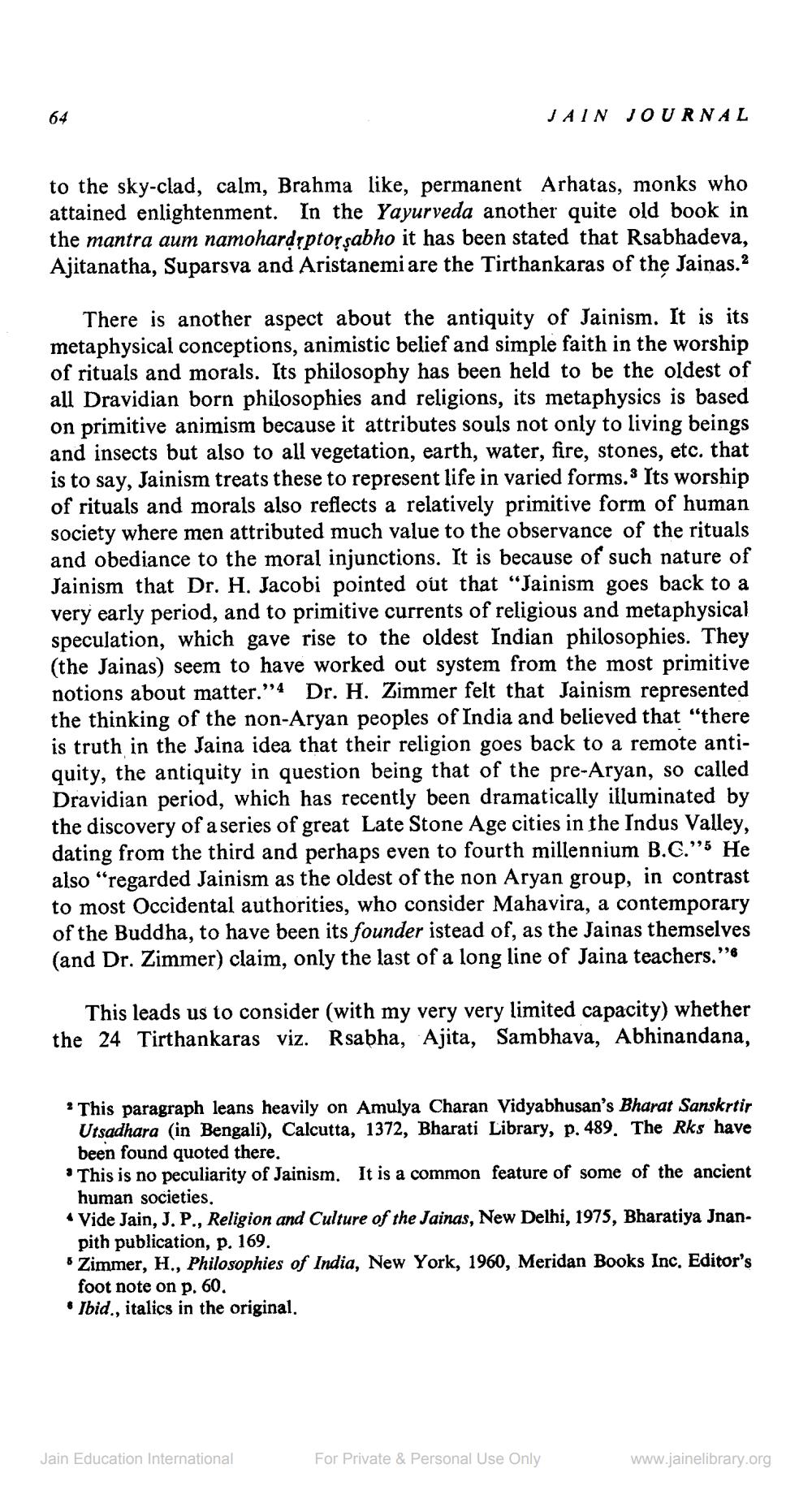________________
64
to the sky-clad, calm, Brahma like, permanent Arhatas, monks who attained enlightenment. In the Yayurveda another quite old book in the mantra aum namoharḍṛptoṛşabho it has been stated that Rsabhadeva, Ajitanatha, Suparsva and Aristanemi are the Tirthankaras of the Jainas.2
JAIN JOURNAL
There is another aspect about the antiquity of Jainism. It is its metaphysical conceptions, animistic belief and simple faith in the worship of rituals and morals. Its philosophy has been held to be the oldest of all Dravidian born philosophies and religions, its metaphysics is based on primitive animism because it attributes souls not only to living beings and insects but also to all vegetation, earth, water, fire, stones, etc. that is to say, Jainism treats these to represent life in varied forms. Its worship of rituals and morals also reflects a relatively primitive form of human society where men attributed much value to the observance of the rituals and obediance to the moral injunctions. It is because of such nature of Jainism that Dr. H. Jacobi pointed out that "Jainism goes back to a very early period, and to primitive currents of religious and metaphysical speculation, which gave rise to the oldest Indian philosophies. They (the Jainas) seem to have worked out system from the most primitive notions about matter."4 Dr. H. Zimmer felt that Jainism represented the thinking of the non-Aryan peoples of India and believed that "there is truth in the Jaina idea that their religion goes back to a remote antiquity, the antiquity in question being that of the pre-Aryan, so called Dravidian period, which has recently been dramatically illuminated by the discovery of a series of great Late Stone Age cities in the Indus Valley, dating from the third and perhaps even to fourth millennium B.C."5 He also "regarded Jainism as the oldest of the non Aryan group, in contrast to most Occidental authorities, who consider Mahavira, a contemporary of the Buddha, to have been its founder istead of, as the Jainas themselves (and Dr. Zimmer) claim, only the last of a long line of Jaina teachers."
This leads us to consider (with my very very limited capacity) whether the 24 Tirthankaras viz. Rsabha, Ajita, Sambhava, Abhinandana,
"This paragraph leans heavily on Amulya Charan Vidyabhusan's Bharat Sanskrtir Utsadhara (in Bengali), Calcutta, 1372, Bharati Library, p. 489. The Rks have been found quoted there.
'This is no peculiarity of Jainism. It is a common feature of some of the ancient human societies.
* Vide Jain, J. P., Religion and Culture of the Jainas, New Delhi, 1975, Bharatiya Jnanpith publication, p. 169.
"Zimmer, H., Philosophies of India, New York, 1960, Meridan Books Inc. Editor's foot note on p. 60.
* Ibid., italics in the original.
Jain Education International
For Private & Personal Use Only
www.jainelibrary.org




